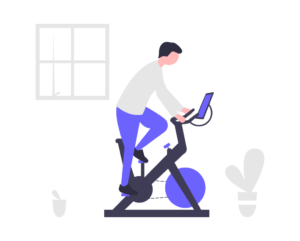How to Tell If You’re Fresh or Fatigued Based on Heart Rate and Power Output
Introduction
Cyclists often monitor their heart rate (HR) and power output (watts) to gauge fitness and recovery. However, a higher-than-normal HR relative to power can indicate both freshness or fatigue, depending on context. Understanding the physiological mechanisms behind this phenomenon can help optimize training and recovery.
This article explores scientific research on cardiac drift, fatigue markers, and heart rate variability (HRV) to help cyclists interpret HR and power data accurately.
The Science Behind Heart Rate and Power Output
1. Cardiac Drift and Its Implications
Cardiac drift refers to a gradual increase in heart rate despite maintaining a steady power output, often caused by:
- Increased core temperature (González-Alonso et al., 1999)
- Dehydration and blood plasma reduction (Coyle & Montain, 1992)
- Cardiovascular stress due to prolonged exercise
A study by Coyle et al. (1990) found that even well-conditioned athletes experience a 5-10% HR increase in long endurance rides due to dehydration and thermoregulation.
👉 If your HR is rising despite holding a steady Zone 2 power, assess hydration and temperature before assuming fatigue.
2. Fatigue Indicators: When a High HR Means Overtraining
A higher HR at lower watts can suggest accumulated fatigue, especially when accompanied by:
✅ Slow Recovery Between Intervals
- If HR remains elevated after efforts and takes longer than usual to return to baseline, it could indicate central nervous system (CNS) fatigue (Halson, 2014).
✅ Elevated RPE (Rate of Perceived Exertion) with Low Watts
- If watts feel harder than usual at a high HR, your cardiovascular system might be overreaching.
✅ Suppressed HR Response to Effort
- A paradoxical drop in HR despite increased effort can indicate autonomic nervous system dysfunction (Le Meur et al., 2013), a hallmark of overtraining.
👉 Solution: If these signs persist, consider a rest day, increasing sleep, and checking HRV before pushing harder.
3. Freshness Indicators: When a High HR Means Peak Form
A higher HR with high watts and low RPE can indicate excellent cardiovascular readiness. Signs of freshness include:
✅ Higher HR with High Watts and Low RPE
- If watts feel effortless, and HR is high but comfortable, your body is primed for performance.
✅ Quick HR Recovery Between Intervals
- If HR drops rapidly after efforts, your parasympathetic system is functioning well, a sign of freshness (Buchheit & Laursen, 2013).
✅ Heart Rate Aligns with Perceived Exertion
- If HR is slightly elevated, but you feel strong, it likely means you are well-recovered and ready for peak performance.
4. Special Case: High HR + Zone 2 Watts + Low RPE
If your HR is higher than usual at Zone 2 power, but RPE is low, possible explanations include:
✅ Increased Core Temperature or Dehydration
- Studies (González-Alonso et al., 1999) confirm that dehydration can elevate HR without increasing power output.
✅ Caffeine or Stimulants
- Stimulants raise HR independently of power output (Glaister et al., 2016).
✅ Post-Rest Period Adaptation
- After rest weeks, HR often runs slightly higher as the body adjusts back to training.
✅ External Stress or Excitement
- Cortisol and adrenaline can elevate HR without affecting watts (Kivimäki et al., 2020).
👉 What to Do? Monitor it over a few sessions—if it normalizes, it was likely hydration or stimulation. If it persists, you may need to adjust training intensity or take additional recovery.
5. How to Monitor Fatigue vs. Freshness Effectively
✅ Use HRV (Heart Rate Variability) Analysis
- Studies (Plews et al., 2013) show that low HRV indicates fatigue, while high HRV suggests freshness.
✅ Track Resting HR Trends
- A consistently elevated resting HR (↑5-10 bpm from baseline) can signal accumulated fatigue.
✅ Compare Power-to-HR Ratios Over Time
- If HR increases without a proportional power increase, reassess recovery, sleep, and nutrition.
✅ Listen to RPE & Recovery Metrics
- If your HR feels “off” but watts are normal, external factors like stress, diet, and hydration might be influencing your physiology.
Conclusion: Interpreting HR and Power for Smarter Training
A higher-than-normal HR at a given power can signal either fatigue or peak form—context is key.
🚴♂️ High HR + Low Watts + High RPE = Fatigue, dehydration, or overtraining
🚴♂️ High HR + High Watts + Low RPE = Freshness, peak performance state
🚴♂️ High HR + Zone 2 Watts + Low RPE = Temperature, caffeine, or adaptation response
By combining HR, power, HRV, and recovery data, cyclists can fine-tune training, prevent overtraining, and optimize performance. If needed, use our power zones and heart rate zones calculators.








